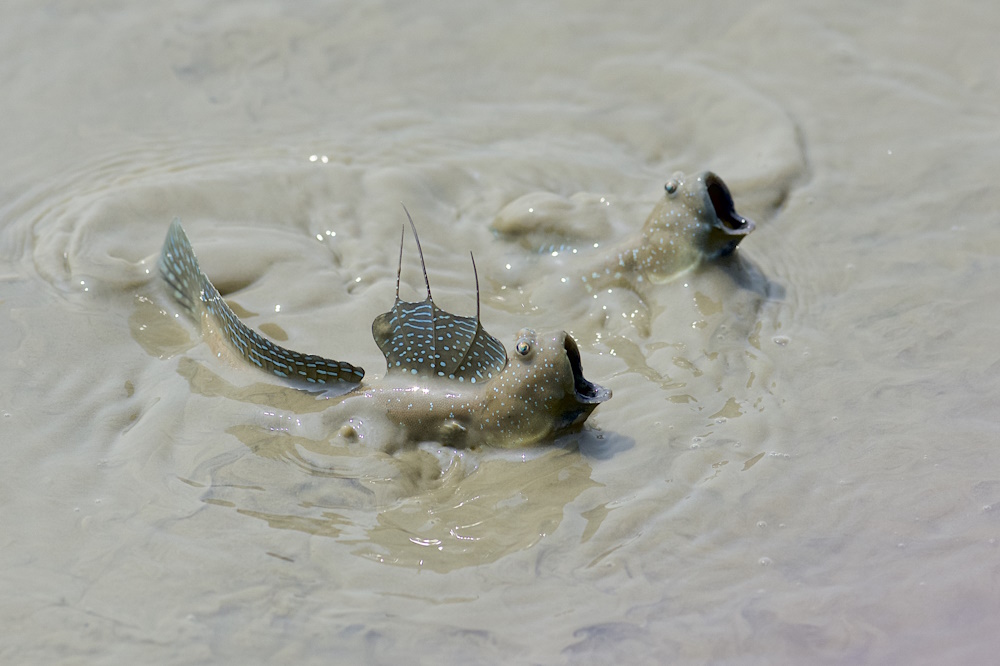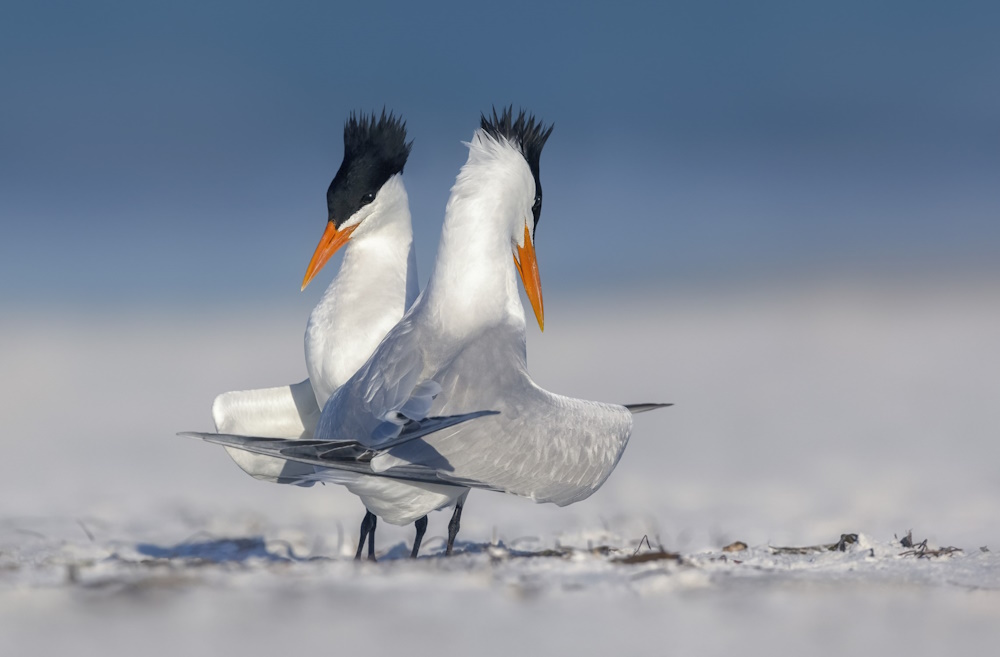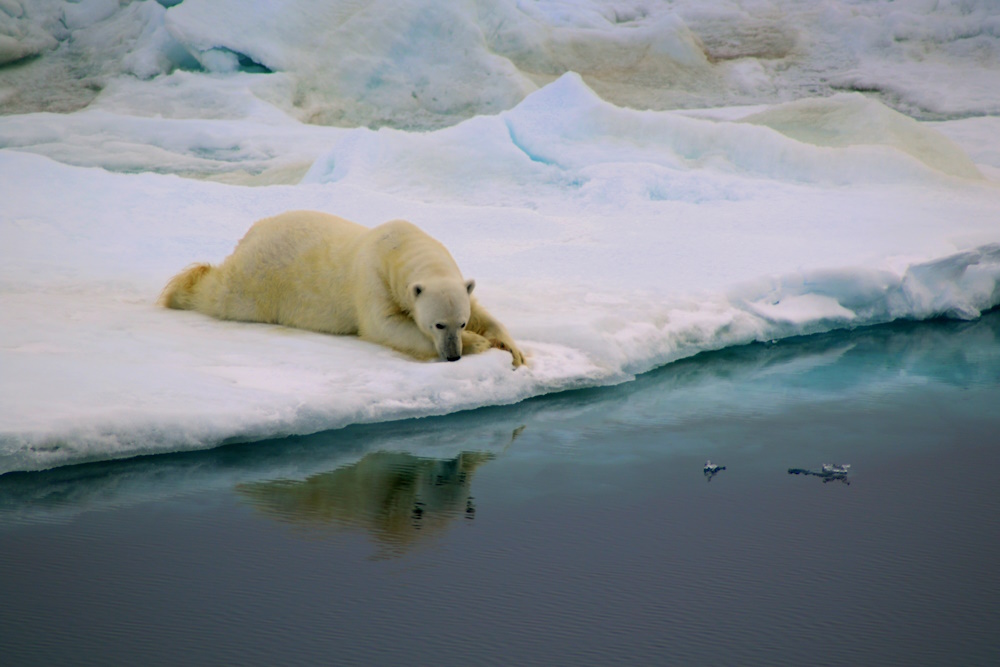Behaviour 2016
Shortlisted entries in the Behaviour category from the 2016 Royal Society Publishing Photography Competition.
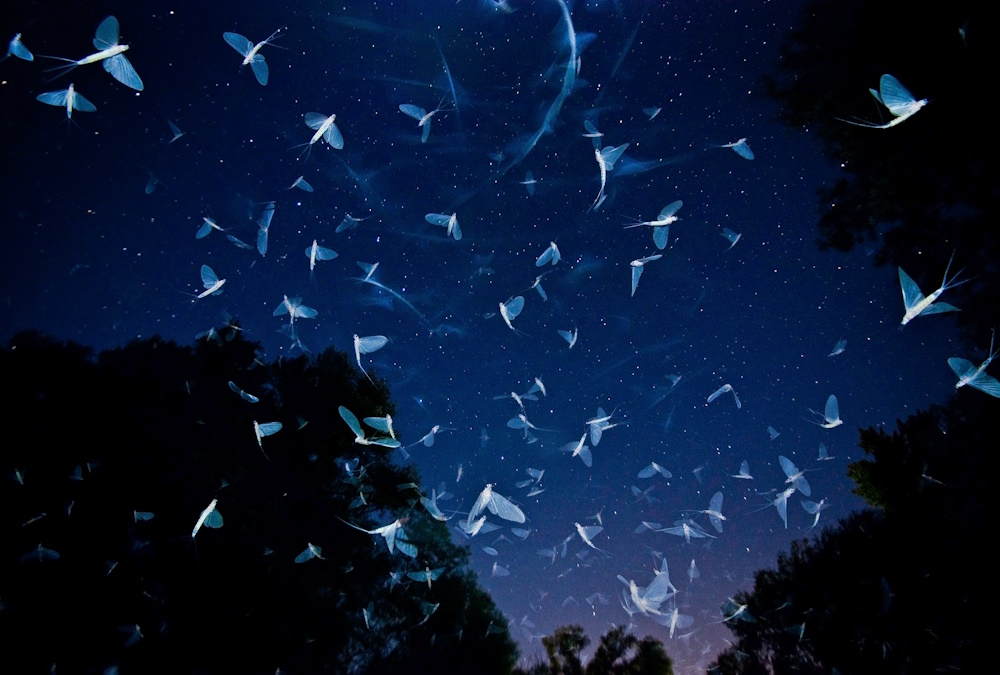
Overall winner and category winner: Behaviour. "Dancing with stars" by Imre Potyó. After a few decade’s absence, the Danube mayfly (Ephoron virgo) has returned to the river, probably due to the improving water quality. This photo captures the courtship dance of the short-lived adult mayflies on the bank of the Rába River, a tributary of the Danube in Hungary. The life of an adult mayfly is very short. They hatch from their juvenile aquatic form, mate in this fantastic spectacle, and then perish. The swarming dates are unpredictable and the dance might only last only a couple of hours. The mayflies start to swarm after sunset and do not leave the vicinity of the water surface during their courtship. At the beginning, females and males fly above the water surface where they copulate. After that the females begin their upstream-directed compensatory flight, which ends when they deposit their eggs onto the water surface. This shot captures the fantastic energy and chaos of the mayflies’ dance and the mood of the night time too.
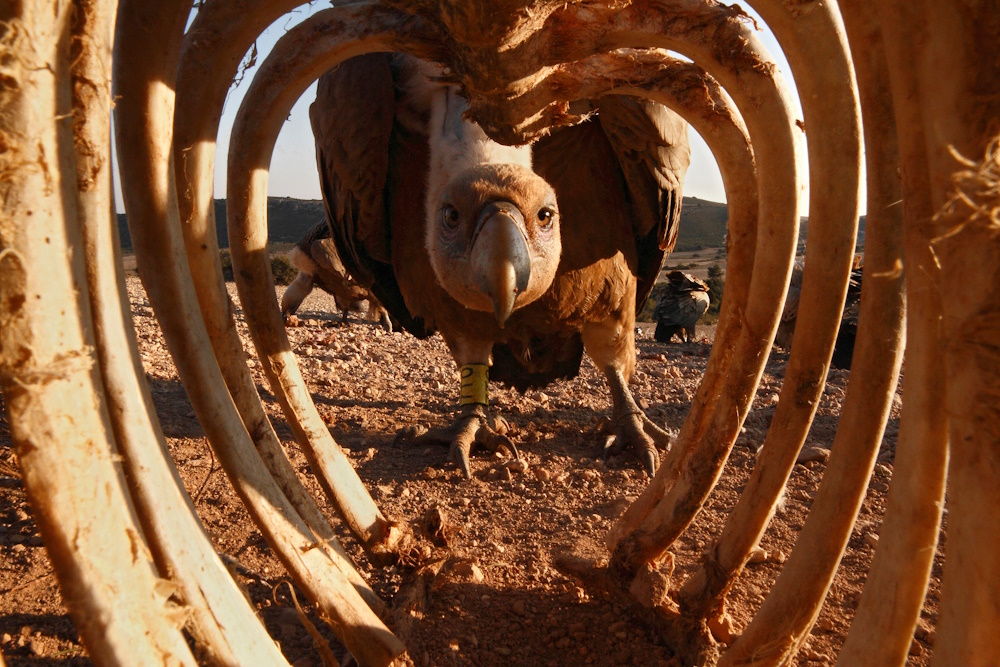
Runner up: Behaviour. "In search of food" by Jonathan Diaz-Marba. I watched feeding griffon vultures searching inside the ribcage of a large mammal. I tried my luck using the camera inside the carcass, shooting from a hide with the help of a trigger wire 20 meters long. My fear was that these huge birds could vandalize the expensive photographic equipment, but I had to take the risk. I realized that the use of a flash to illuminate the inside of the rib cage was not possible because the space was very small and the vultures distrusted much of the equipment. Instead everything was illuminated with natural light at dawn. At this time and at this angle of incidence, light seeped between the ribs of the animal, illuminating the interior. The birds nest in colonies on cliffs that are undisturbed by humans and fly over huge open areas searching for food. It was therefore important to choose the time and place carefully – in particular, I chose an area with many magpies, whose presence gives the vultures a good cue of where to feed.
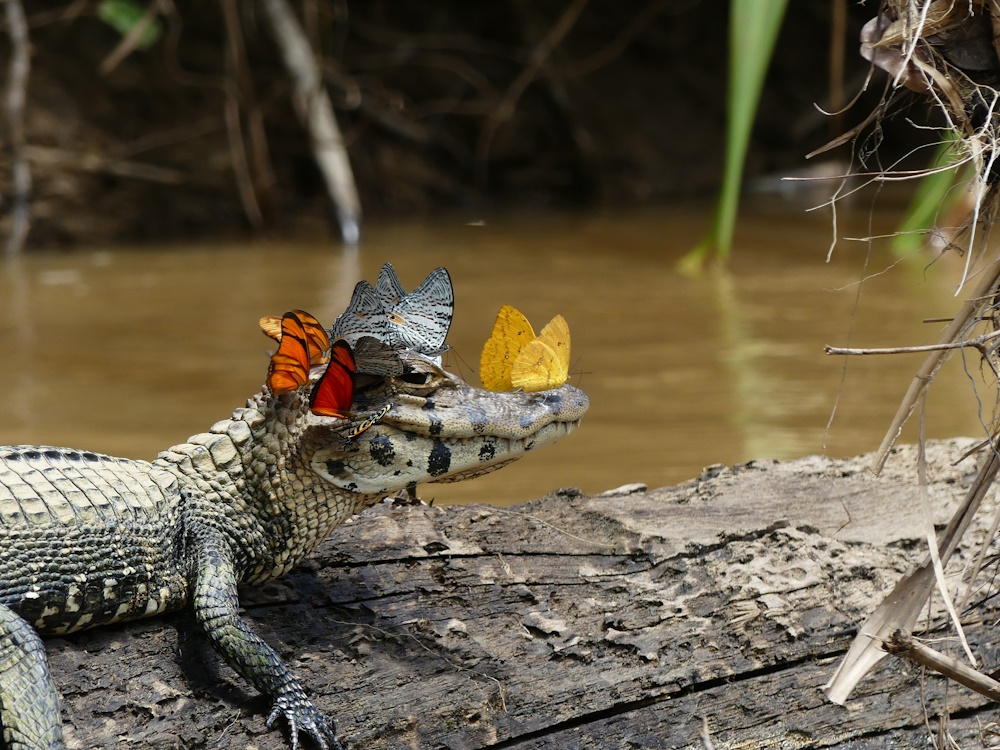
Special commendation. "Butterflies and caiman" by Mark Cowan. Colourful butterflies gather on the head of this caiman to collect salt - an important mineral for their survival. This photo was taken while on a scientific expedition to the Amazon to study reptile and amphibian diversity. The expedition was led by researchers from the Herpetology Division at the University of Michigan and included participants from Peru and Australia. A number of minerals are a scarce resource throughout Amazonia and so this behaviour allows these invertebrates access to salt, much like the clay licks that are used by a variety of vertebrates. This particular phenomenon where butterflies and bees congregate on the heads and around the eyes of caimans and turtles has been documented before but what is unique here is the simultaneous number of butterfly species and the way in which each species is associated with its own kind.
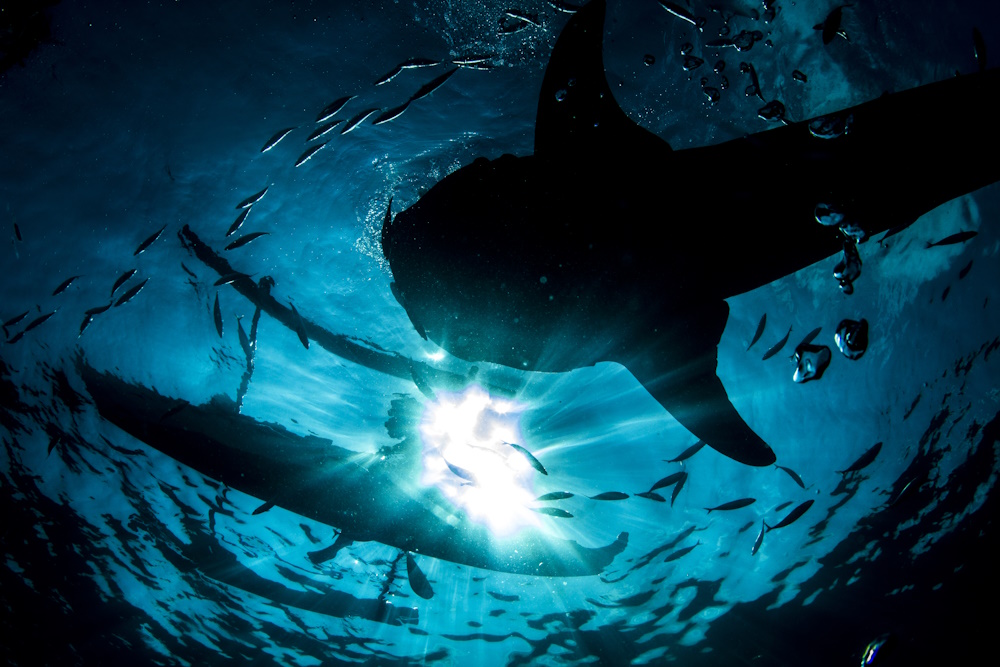
"Whale Shark Snack" by Lindsey Dougherty. Whale sharks in Oslob (Philippines) congregate hoping for a snack from local fisherman. They have learned to associate boats with leftover food, catch and bait.
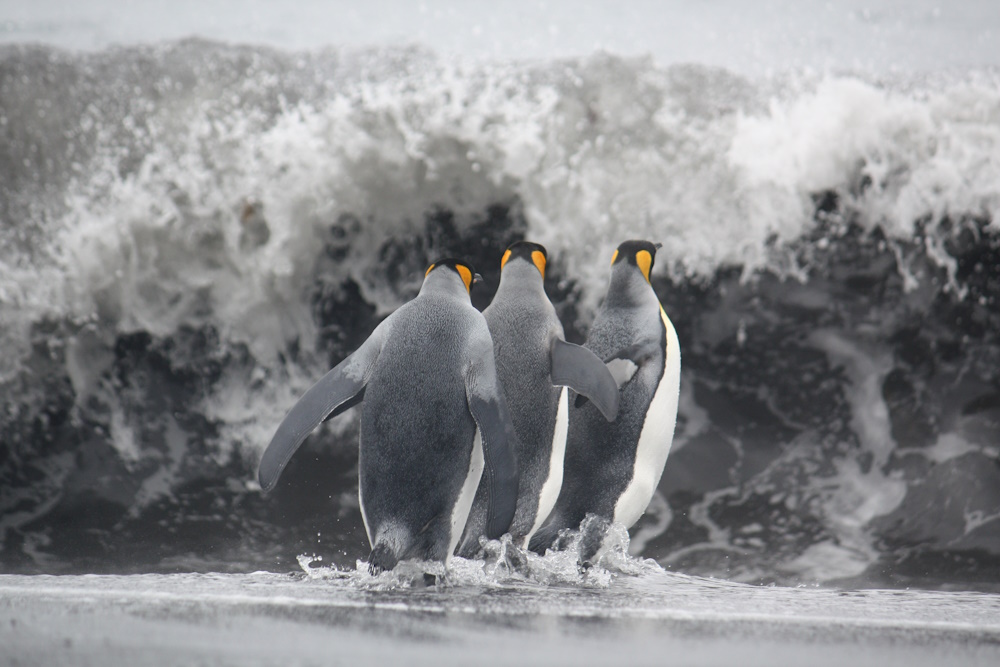
"Departure to the sea" by Kozue Shiomi. Penguins must their homes to forage for food, even in these extremely harsh environments. In many places they face high waves such as these on entering the sea.
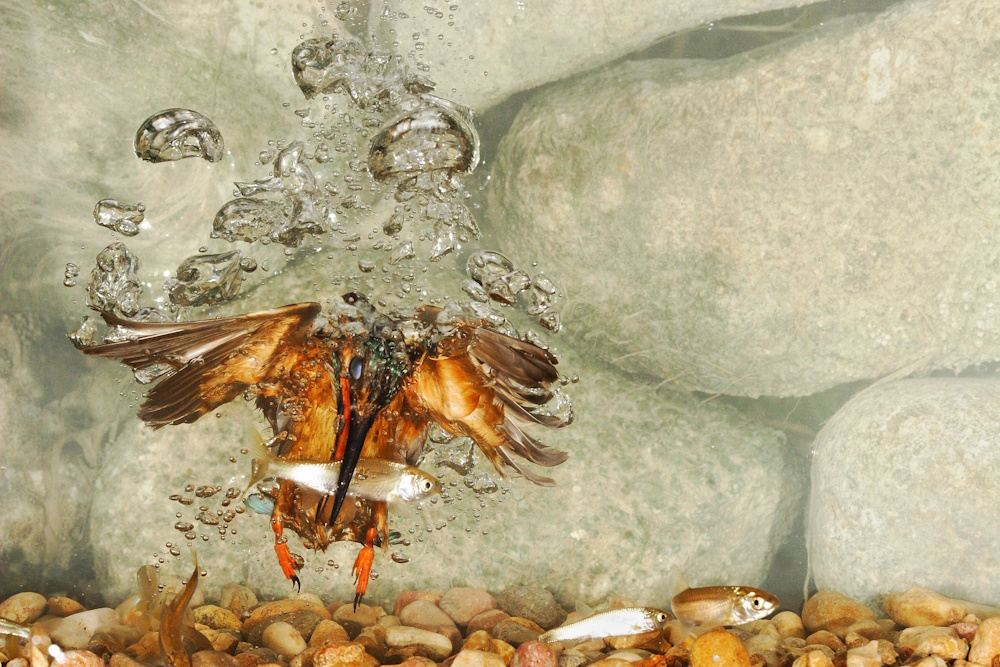
"The living harpoon" by Jonathan Díaz Marbá. A kingfisher catches a fish in the waters of the Bergantes river (Spain).
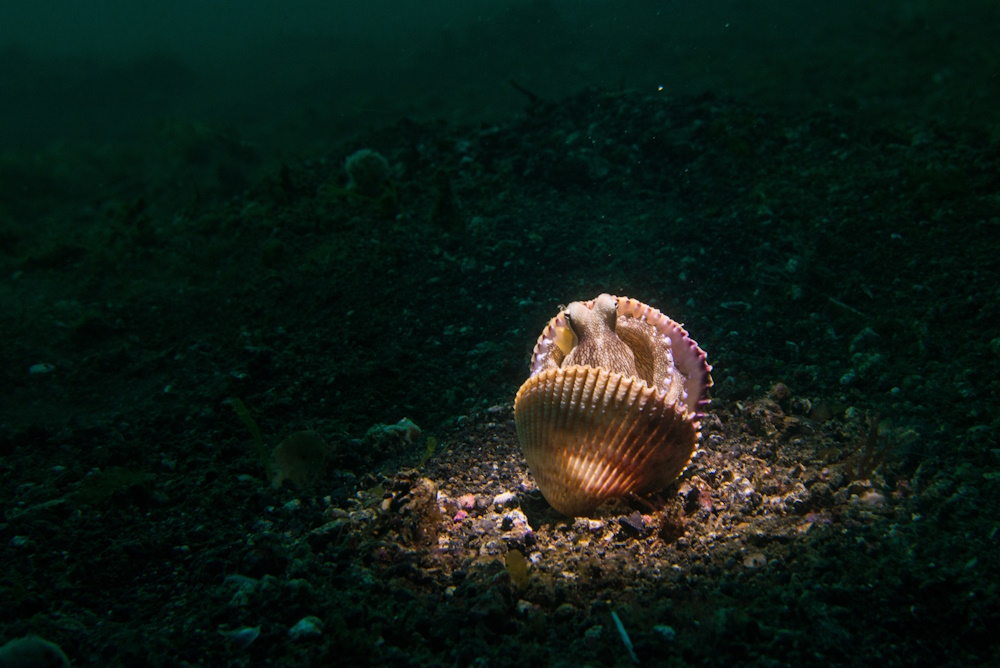
"A New Home" by Nick Robertson-Brown. The coconut octopus will make a "home" out of any object that can offer protection, be it a coconut shell (from which they get their name) or from abandoned or discarded shells on the seabed. They jump in and close the two halves around them, peaking out every now and then. For this shot a torch was held over the octopus to provide a type of "snoot" shot. Nikon D800, Sealux housing, INON Z-240 strobes, 60mm lens, f/16, 1/80, ISO 1000. The background has been darkened slightly on the shot, the contrast increased and some colour settings adjusted.
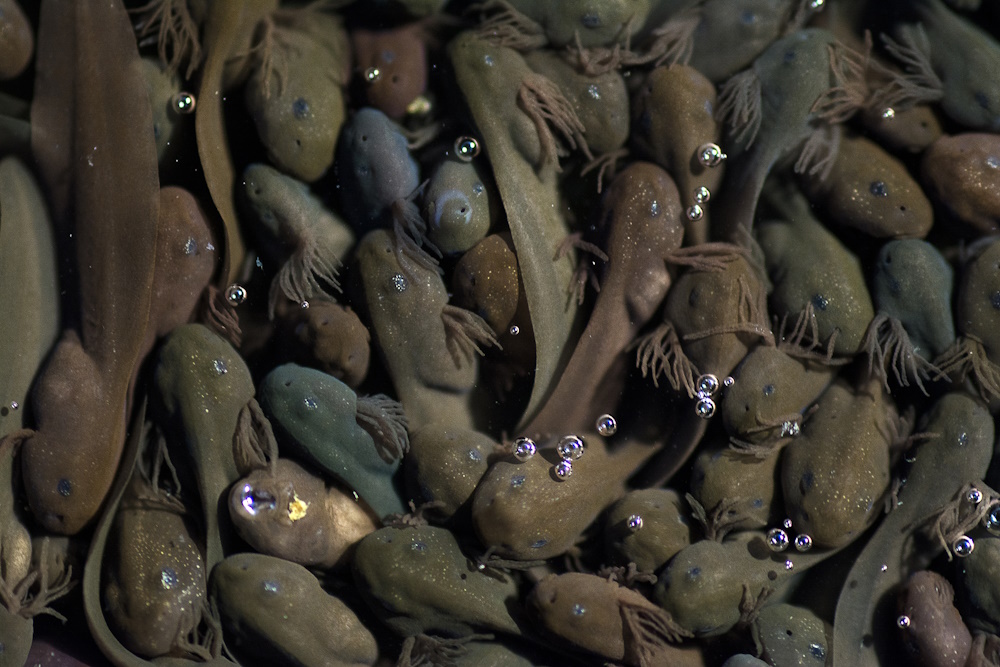
"Mass of tadpoles" by Yavanna Aartsma. Common frogs (Rana temporaria) lay their egg masses in groups, resulting in large clumps of frogspawn gathering in one location. The tadpoles emerge quickly as the water heats up in the middle of the egg masses, and at first they are trapped between the other egg masses. Over the course of the next few days it is possible to see them develop eyes and slowly the outer gills dissappear. The tadpoles are in close interaction with each other and continouous movement can be observed. This photograph was taken in an urban pond in Wageningen, the Netherlands. The tadpole masses were very close to the water edge and therefore could be photographed from above without disturbing them. Some adjustments to contrast and lighting were made in RAW post processing. Some sharpening was applied as the tadpoles are moving a lot.
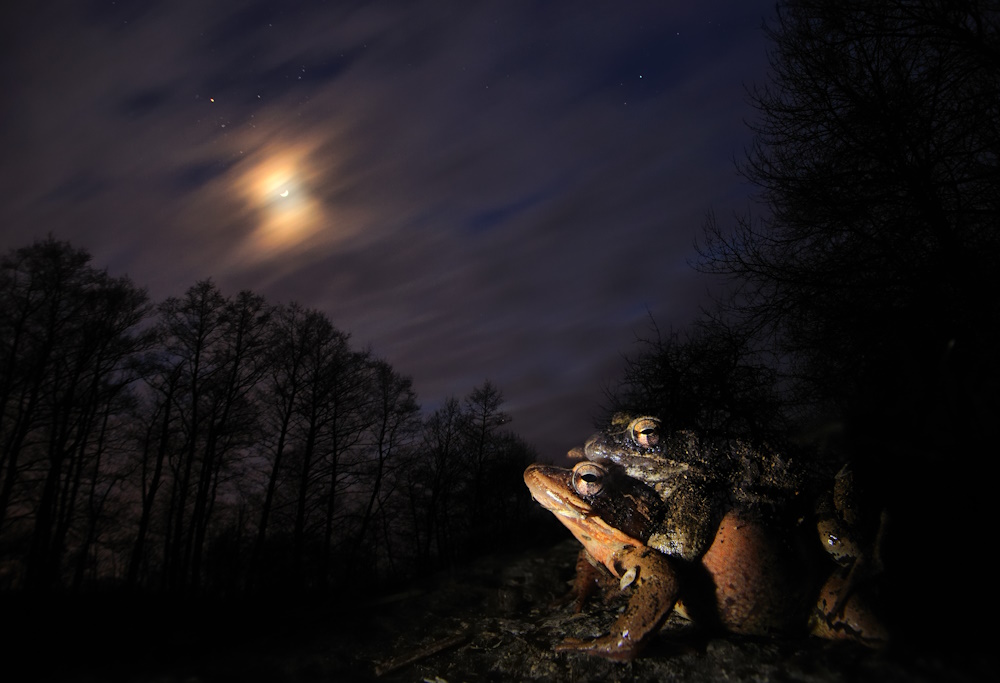
"Wedding night" by Imre Potyó. Mating frogs (Rana temporaria) under the colorful lunar corona at Börzsöny Hill, Hungary.
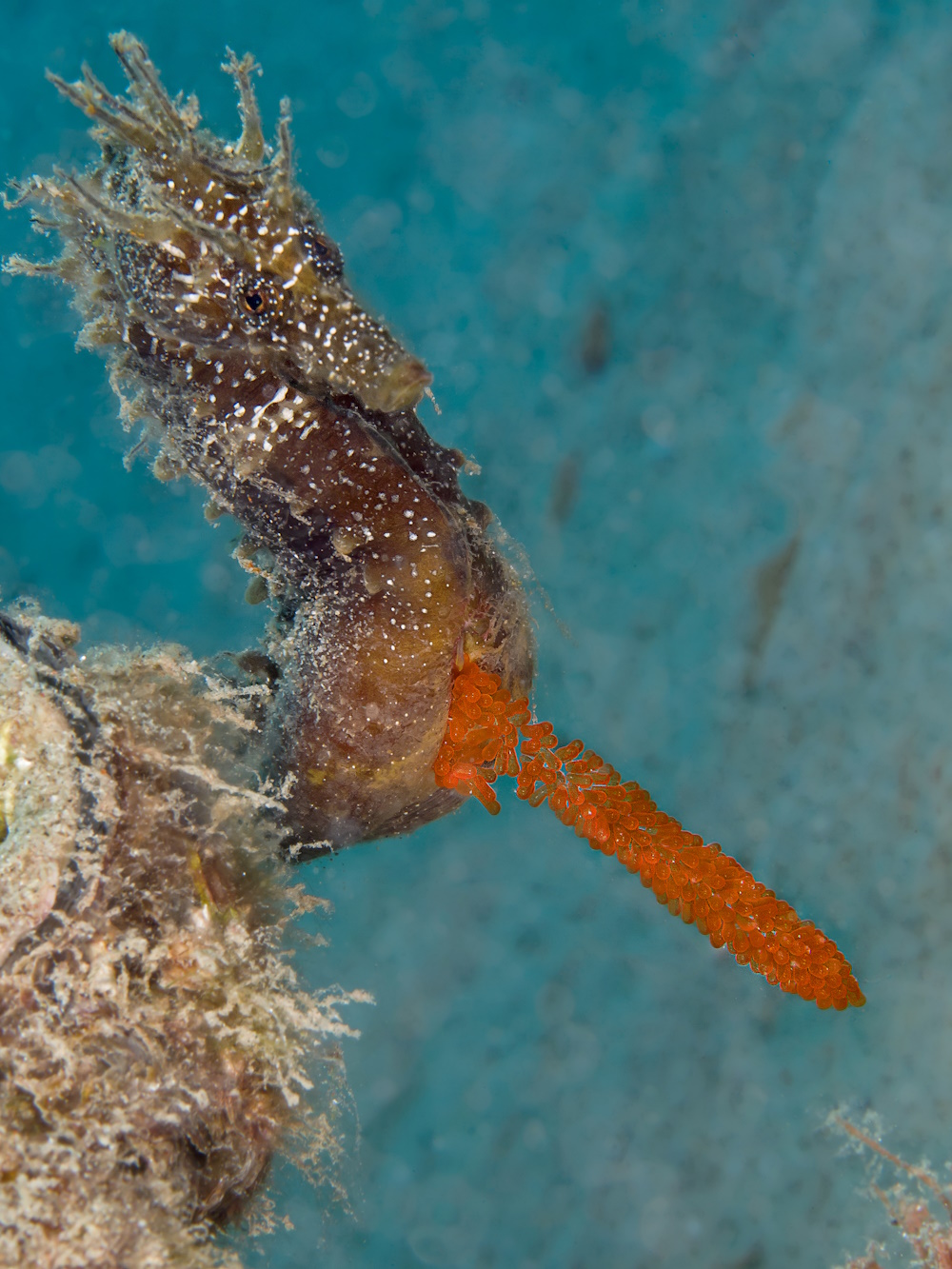
"Dad and her Eggs" by Walter Bassi. During diving, the whole sequence of mating between male and female can be seen, like a dance in the blue. When the male and female split after mating a portion of eggs was seen left out of the belly of the male, this situation is very rare and unique. This picture was taken while the horse tries to retrieve the eggs. The main difficulty with taking this picture was was not to bother the seahorse in order not to lose the eggs. Location: Capo Noli (Liguria sea, Italy)

"Army of me" by Serban Proches. Gregarious and toxic pyrgomorphid grasshoppers in the Eastern Cape, South Africa.
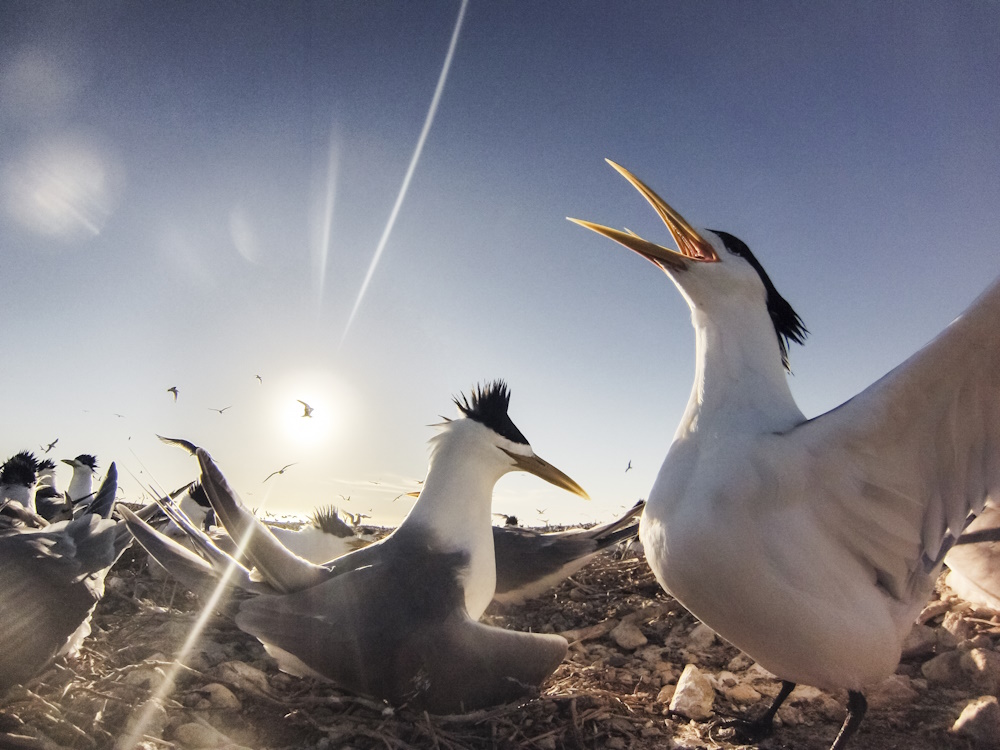
"The dance" by Davide Gaglio. Swift Terns are beautiful and elegant seabirds. During breeding, one partner remains incubating the egg, while one goes out foraging. Adult swift terns perform this "dance" as a greeting when the partner arrives back from a foraging trip.
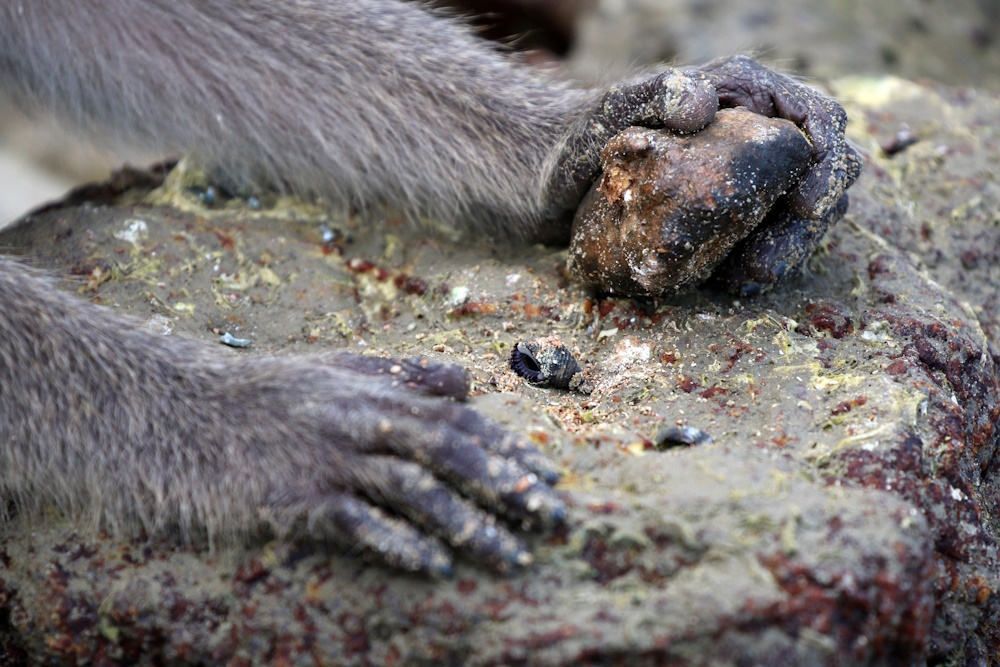
"Crunch time" by Michael Haslam. A marine snail awaits its fate, at the hands of a stone-tool-wielding Burmese long-tailed macaque (Macaca fascicularis aurea). The wild macaques of Koram Island, Thailand, use tools to break open shellfish while foraging during low tide. Afterwards, all that is left at the crime scene are scattered shell remains. The photo was taken with a Canon EOS 70D, and has been adjusted for tone and contrast.

"The last fight" by Prasenjeet Yadav. This image shows a struggling beetle who is trying to escape from Weaver ants. It gave its best fight but knowing the Weaver ant team work and behaviour, the end of the beetle was inevitable.
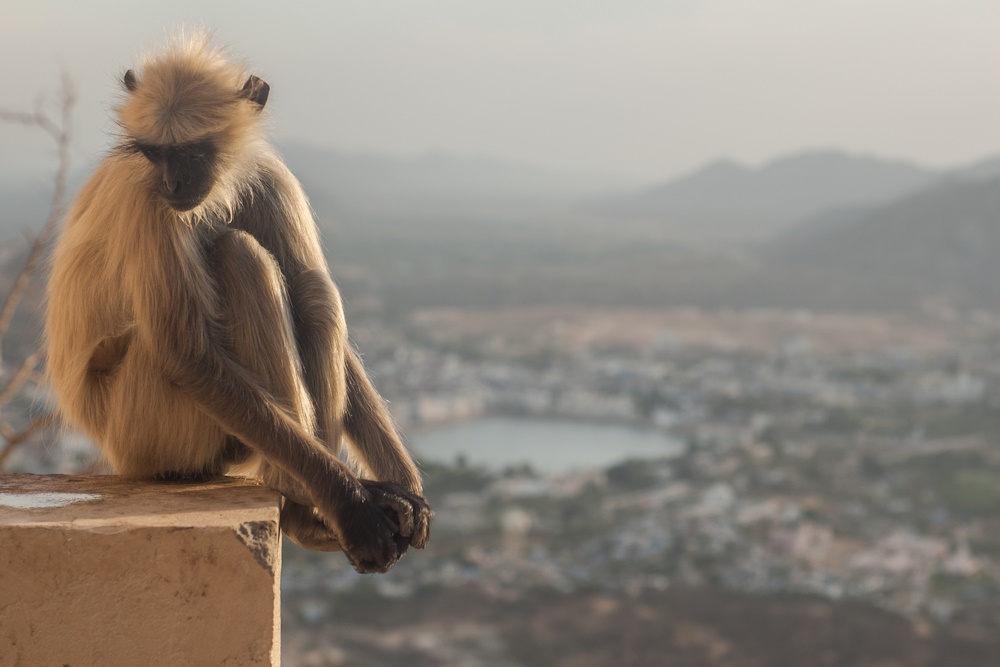
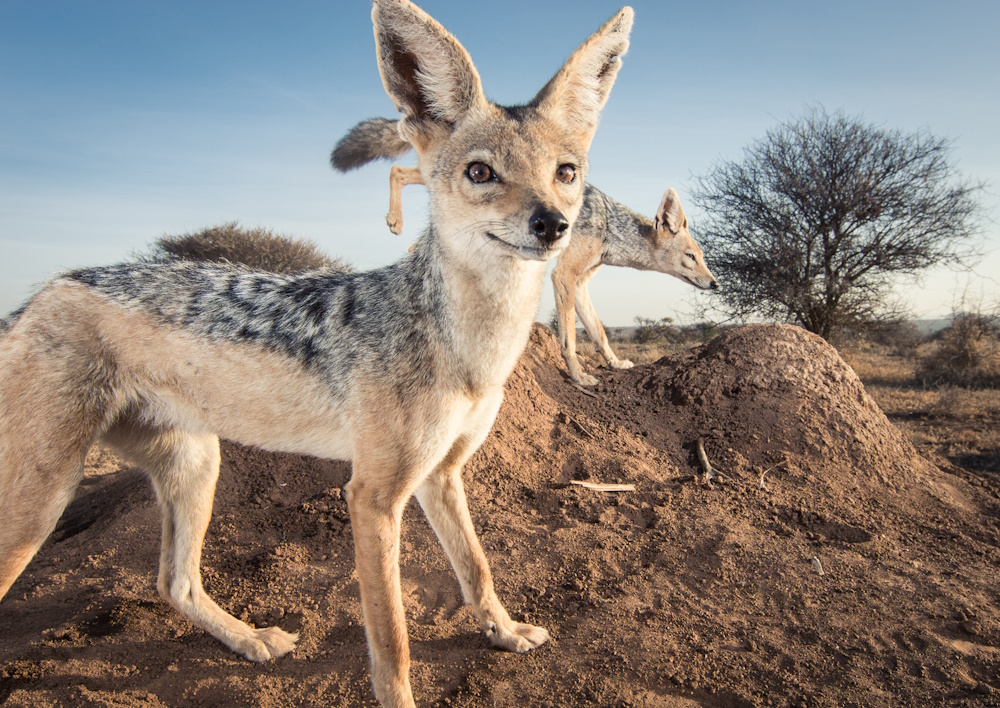
"Laikipia jackals" by Jonathan Armstrong. Jake Goheen and I set this camera trap to capture nighttime images of aardvarks feeding on termites. During the day, a masai herder and his cattle came through and triggered dozens of images. Right after the last cow passed by my camera, this photo was captured of a pair of black-backed jackals; they may have been using the herd to flush prey. The raw image was processed with minor adjustments made to color balance and contrast.

